The Flinders Street Railway Station complex, served by Metro‘s suburban services and V/Line regional services to Gippsland, covers two whole city blocks and extends from Swanston Street to Queen Street.
Here are some interesting trivia regarding this railway station:
- It is the busiest station on Melbourne’s metropolitan network, with over 1,500 trains passing through each day and 77,153 daily entries were recorded in the 2017/2018 fiscal year.
- By 1926, Finders Street Station became the busiest passenger station in the world, surpassing Gare Saint-Lazare in Paris, Grand Central Station in New York City and Liverpool Street Station in London. On the January 11th1922, The Argus Newspaper reported 200,000 passengers passed through the station in one day.
- Flinders was the first and oldest railway station in an Australian city
- In the late 1920s, it was the world’s busiest passenger station.
- The main building is one of the city’s most recognizable landmarks and a cultural icon of Melbourne.
- An urban myth, widely reported, is that the design and plans for the Flinders Street Station and the Chhatrapati Shivaji Terminus (originally named Victoria Terminus) in Mumbai (India) were switched, resulting in an Italian Gothic style station in India and a vaguely East-Indian style building in Melbourne.
- The building is listed on the Victorian Heritage Register.
- Prior to Federation Square, Flinders Street Station was a favorite and popular informal meeting place for Melbournians since the station’s opening and is often a congregation point for subculture. Although the station was not intended for this purpose plus there is no seating or other infrastructure to suggest it as a destination, the location (opposite the well-known Young and Jackson Hotel and overlooking two of the busiest tram routes in the city) meant it was accessible and visible to many of the city’s main pedestrian thoroughfares. “I’ll meet you under the clocks” (referring to the row of clocks above the main entrance) and “I’ll meet you on the steps” (referring to the wide staircase underneath these clocks) are popular Melburnian The site’s cultural significance extends beyond its main function as a transport hub.
- The ghostly figure a man on platform 10 holding fishing gear, known as George, has reportedly been seen by commuters, seeming somewhat disoriented as he gazes out at the Yarra River before vanishing into thin air. Many believe he has been around since the days of Melbourne’s settlement, whereas others believe he is the spirit of George Mansfield (later identified as Ernest Leahy) who was pulled from the river, after a boating accident, on October 21, 1902.
- Martin Kingham, former Victorian secretary of the Construction, Forestry, Mining and Energy Union, revealed that when he worked on the station’s refurbishment in the late 1980s, the builders incorporated heating into the steps so that those sitting there wouldn’t get cold.
- The 708-m. long main station platform 1 is Australia’s longest and is also, reportedly, the fourth longest railway platform in the world. Servicing the South Morang and Hurstbridge lines, it was, once upon a time, home to the Milk Dock and the Parcels Office and, up until 1986, most of Melbourne’s milk was unloaded here off trains from Gippsland.
- Flinders Street Station is responsible for two of Melbourne’s busiest pedestrian crossings, both across Flinders Street, including one of Melbourne’s few pedestrian scrambles.
- Flinders Street Station has appeared on screen in films including Squizzy Taylor (1982) and On the Beach (1959, starring Gregory Peck, Ava Gardner, Fred Astaire and Anthony Perkins). It also featured in the background of Steven Spielberg’s TV mini-series The Pacific.
Check out “Grand Central Terminal“
The Art Nouveau-style main station building, with its distinctive façade, has a prominent green copper dome, arched entrance, tower and clocks. Takeaway stands line the concourse, and the upper floors were purpose-built to house a library, gym and a lecture hall (later used as a ballroom).
Here is the historical timeline of the railway station:
- In 1882, the government decided to build a new central passenger station to replace the existing ad-hoc station buildings.
- In 1883, the first signal boxes were opened at the station one at each end of the platforms.
- By the 1890s a third island platform had been constructed.
- In 1899, a design competition, essentially for the detailed design of the station building, was finally held and 17 entries were received. First prize was awarded to to railway employees James Fawcett and HPC Ashworth, of Fawcett and Ashworth, who won £500 for their French Renaissance style “Green Light” project. It included a large dome over the main entrance and a tall clock tower over the Elizabeth Street entrance. A train shed over the platforms was intended to have many arched roofs running north-south, but only an alternative plan, depicting an impressive three-arched roof (running east-west) over the concourse, survives. The location of the concourse and entrances, the track and platform layout, the type of platform roofing, and even the room layout to some extent, were already decided.
- In 1900, work began on the rearrangement of the station tracks, while the final design of the station building was still being worked on.
- In 1901, work on the central pedestrian subway started
- By 1903, the foundations of the main building were completed.
- In 1904, in mid construction, the plans were extensively modified by the Railways Commissioners. The proposed train shed was replaced by individual platform roofs, and it was decided not to include a concourse roof. To increase office space, a fourth storey was added to the main building, which resulted in the arches above each entrance on Flinders Street being lowered, decreasing their dominance.
- In 1905, work began on the station building itself, starting at the west end and progressing towards the main dome. Ballarat builder Peter Rodger was awarded the £93,000 contract. The building was originally to have been faced in stone, but that was considered too costly, so red brick, with cement render details, was used for the main building instead. At ground level, on the Flinders Street side, grey granite from Harcourt was used for many details. The southern facade of the main building consisted of a lightweight timber frame clad with zinc sheets, which were scored into blocks and painted red in order to look like large bricks. That was done to created corridors instead of what were to be open-access balconies inside the train shed.
- In 1906, work on the dome started. The structure required heavy foundations as it extended over railway tracks.
- Between August 1906 and November 1907, the Elizabeth Street clock tower was constructed.
- In May 1908, work was progressing more slowly than planned
- In August 1908, with the expected completion date of April 1909 increasingly unlikely to be met, Rodger’s contract was terminated.
- In May 1910, a Royal Commission was appointed finding that Rodger could be held accountable for the slow progress in 1908, but he should be compensated for the difficulties before then. The Way and Works Branch of the Victorian Railways took over the project
- By mid-1909, the station was essentially finished. The veranda along Flinders Street, and the concourse roof and veranda along Swanston Street, were not completed until after the official opening in 1910.
- In 1919, the first electric train service operated from Flinders Street to Essendon.
- In June 1933, the Railways Department established The Children’s Nursery featuring three cot rooms, two play rooms, a kitchen and a rooftop playground. The childcare facility was used by mothers visiting the city.
- In 1937, a polio outbreak led to the closure of the Children’s Nursery.
- By 1942, the Children’s Nursery was permanently closed.
- In 1954, to cater for the increasing numbers of passengers, the Degraves Street subway from the station was extended to the north side of Flinders Street.
- In 1962, the Minister for Transport and HKJ Pty Ltd signed an agreement for a £30 million redevelopment of the station that would have resulted in the demolition of the clock tower and replacement with an office building up to 60 stories high.
- In March 1966, the length of Platform One was extended to 708 m. (2,322 ft.).
- In 1967, a company purchased the option to lease the space above Flinders Street Station, planning to build a shopping plaza and two office towers, the dome and clock tower being kept as part of the design, but strong opposition saw this project lapse.
- In 1972, Victorian Premier Henry Bolte unveiled another redevelopment plan, to cover 110,000 m2 (27 acres) of space above the Flinders Street Station and Jolimont Yard, for a complex of shops, offices, theaters and other community facilities.
- In 1974, a newspaper report said that planning was still underway for the $250 million proposal
- By 1975, public perceptions had begun to turn towards retention of the station. At the time, a Builders Labourers Federation green ban helped preserve it in its existing form.
- In June 1980, the 87-m. long ACMI’s Gallery 1, now holding major exhibitions, was created by converting the terminals for the Epping and Hurstbridge Lines at Princes Bridge Railway Station, which was incorporated into Flinders Street Station as platforms 14, 15 and 16.
- In July 1980, television displays used to display next train information were added to each platform.
- In 1982, a $7 million refurbishment, divided into four phases and designed by the railways architect Kris Kudlicki, was announced by Stephen Crabb, the Minister of Transport Minister for Transport.
- Completed by 1984, the first escalators at the station provided on platform 2 / 3 replaced the ramps, and new public toilets were provided, replacing those over the platforms. The main station concourse was tiled and extended westward over the tracks, with skylights added above the ramps,16 new shops opened on the concourse.
- In October 1985, a restaurant, built on the southern side facing the river, was opened.
- In 1994, the restaurant was converted into the “Clocks on Flinders” poker machine
- In June 1985, the main steps were embedded with electrical circuits to keep them dry.
- In 1989, under the John Cain Government, an agreement to construct the “Festival Marketplace” was signed. Planned to feature shops, restaurants and cafes, it was designed by Daryl Jackson architects and it was to be built over the existing platforms in a style sympathetic to the existing station, and be completed by 1992.
- In 1991, the project was abandoned after the inability of the financiers to come up with the $205 million required due to the early 1990s recession.
- In 1993, the Elizabeth Street pedestrian subway opened at the Southbank
- In 1997/98, the tracks to the east of the station were rebuilt to clear the way for the Federation SquareJolimont Yard was eliminated, with $40 million spent to reduce 53 operating lines between Flinders Street and Richmond Station to just 12. The number of points was also reduced, from 164 to 48. Platform usage at the station was also reallocated, with country trains being shifted from platform 1 to platform 10, and Clifton Hill group trains being shifted from the deleted Princes Bridge Station to platform 1.
- By 2007, the refurbishment of the building roof and concourse foundations, an upgrade of platform 10 with escalators and a lift replacing the ramp, the relocation of all ticket booking offices to the main entrance under the main dome and new LCD Passenger Information Displays installed on the platforms, subways and concourse were completed.
- In 2008, the retail pavilions on the concourse were rebuilt, increasing their area.
- That same year, an investigation of the potential of the abandoned spaces in the station, overseen by a task force comprising representatives from Connex, the Committee for Melbourne, Melbourne City Council, Heritage Victoria, was completed but the conclusions have not been made public
- In March 2009, an escalator replaced the lift to platform 12 and 13, with platform 13 also extended westwards into daylight along the alignment of the former platform 11.
- In January 2010, one of the first announcements by the new Minister for Public Transport was that the government was investigating the refurbishment of the abandoned spaces for “cultural uses.”
- In November 2011, the Victorian Government launched a $1 million international design competition to rejuvenate and restore the station.
- In October 2012, after receiving 118 submissions, six finalists were selected. The public could vote.
- On August 8, 2013, the jury’s choice and people’s choice winner were announced. The competition winner was Hassell+ Herzog & de Meuron, while the people’s choice winner were University of Melbourne students Eduardo Velasquez, Manuel Pineda and Santiago Medina.
- In mid-February 2015, Premier Daniel Andrews and Jacinta Allan (Minister for Public Transport) announced that $100 million would be spent for urgent refurbishment works to upgrade station platforms, entrances, toilets, information displays and the restoration of exterior of the main building.
- By July 2017, the station had been almost completely repainted in the original 1910 colors.
- In January 2018, as painting continued, a further round of works was announced including the renewal of the Elizabeth Street pedestrian subway and rebuilding of the subway’s south entrance to include direct access to platform 10.
At the concourse (or Swanston Street end), the building has three levels and four at the lower Elizabeth Street (or platform) end. Numerous shops and lettable spaces were provided. Some are on the concourse (especially along the Flinders Street frontage), many at lower than street level, accessed by stairs which created a fifth/basement level.
The top three levels of the main building, particularly along the Flinders Street frontage, contain a large number of rooms, mostly intended for railway use, but also many as lettable spaces.
At each entry, numerous ticket windows were located while at the concourse (or platform level) are services such as a restaurant, country booking office, lost luggage office and visitors help booth. Much of the third floor was purpose-built for the then new Victorian Railway Institute, including a library, gym and a lecture hall.
The latter was later used as a grand, 400-seat ballroom where dance classes, ballroom competitions and concerts were held. During World War II, dances were held for Allied servicemen and, in the 1950s and 1960s, it was one of the most popular dance halls in Melbourne. The last dance was held on September 10, 1983.
Next door is a gymnasium, once used by the station’s male employees, which featured a boxing ring and billiards room. These rooms have since been closed off to the public and are largely abandoned, derelict and decaying. It also had a 440-yard long rooftop running track and it is completely normal to see men running across the station roof.
A clock tower has also existed at the end of Elizabeth Street since 1883. The first clock was known as the ‘Water Tower Clock’, after a wooden framed water tower erected on the site in 1853. This clock remained in place until 1905 when work begun on the new station, the clock tower being moved to outside Princes Bridge station.
In 1911 it was moved to Spencer Street station, where it remained until the station redevelopment of 1967. Sold to a private collector, it was returned to public ownership and in 1999 was put on display at the Scienceworks Museum, Spotswood. It was returned to Southern Cross station in 2014.
The Elizabeth Street clock tower was constructed between August 1906 and November 1907. The distinctive clocks, a fixture of the station’s façade under the main dome, are part of 60 Bathgate indicators purchased from England for use at the Flinders Street, Spencer Street, Richmond and South Yarra stations.
It has, since the 1860s, shown the departure times of the next trains. When the old station was demolished in 1904, those at Flinders Street were placed into storage. In 1910, 28 were placed into the new station and are located at the main entry under the dome, the southern side archway, and the Degraves and Elizabeth Street entrances.
The clocks at the main entrance, changed an average of 900 times, were manually operated, during an 8-hour period, by a railway officer using a long pole. In 1983, as part of a redevelopment of the station, the original indicator clocks were removed from service, with their replacement by digital displays planned.
However, within one day, an outpouring of public outrage and sentimentality saw the decision reversed. The clocks at the main entrance were altered to automatic operation by computer but those at the Degraves and Elizabeth Street entrances were replaced by large airport-style split-flap displays.
In the 1930s and 1940s, the building featured a creche next to the main dome on the top floor. It had an open-air playground on an adjoining roof. Since 1910, the basement store, beside the main entrance, has been occupied by City Hatters, a hat store known as since 1933.
The Swanston Street concourse, which has undergone the most change of any part of the station, is now three times the depth of the original structure with only the canopy and roofed area on Swanston Street remaining of the original.
Flinders Street Station: cor. Flinders and Swanston Sts., Melbourne, Victoria, Australia. Website: www.flindersstreetstation.com.au.

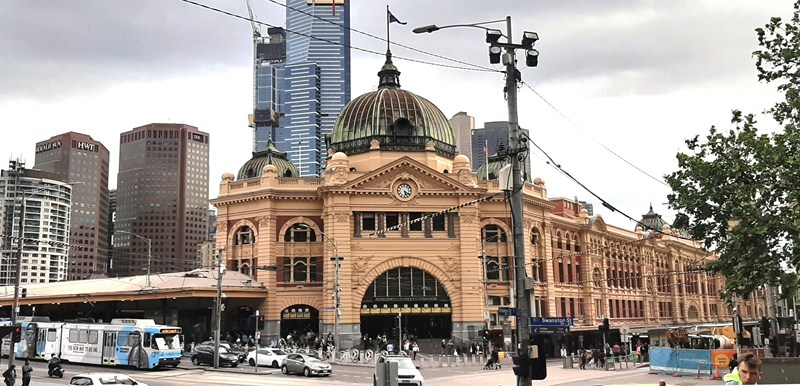
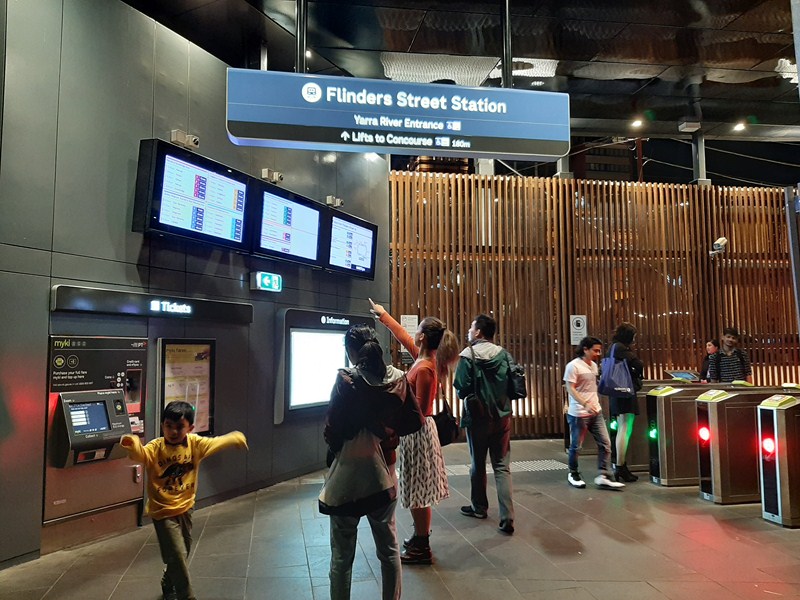
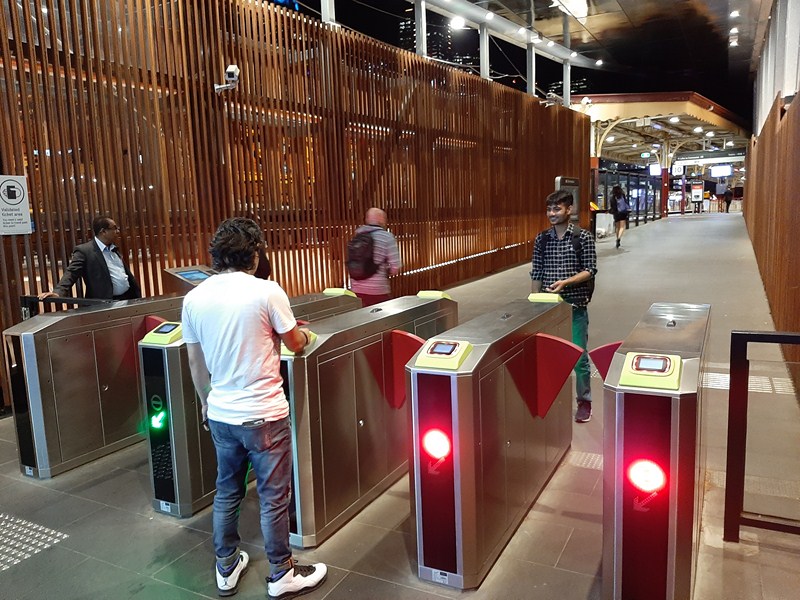
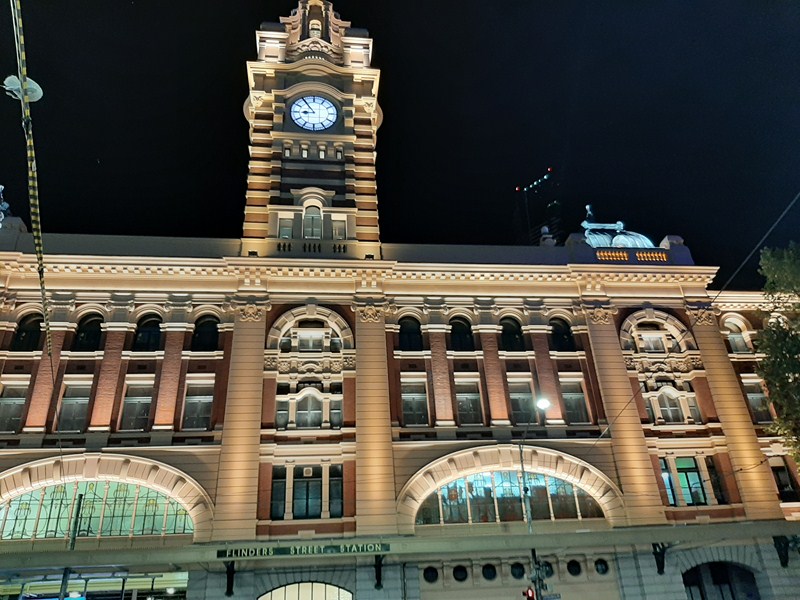
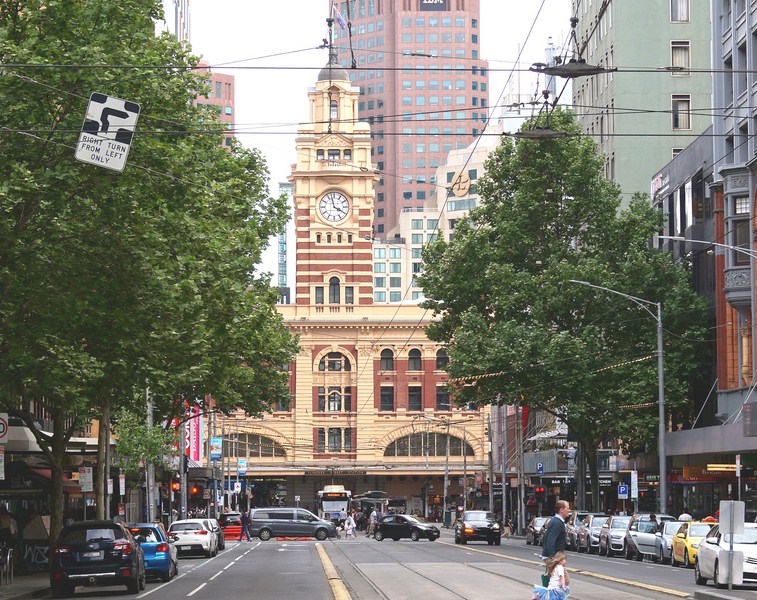

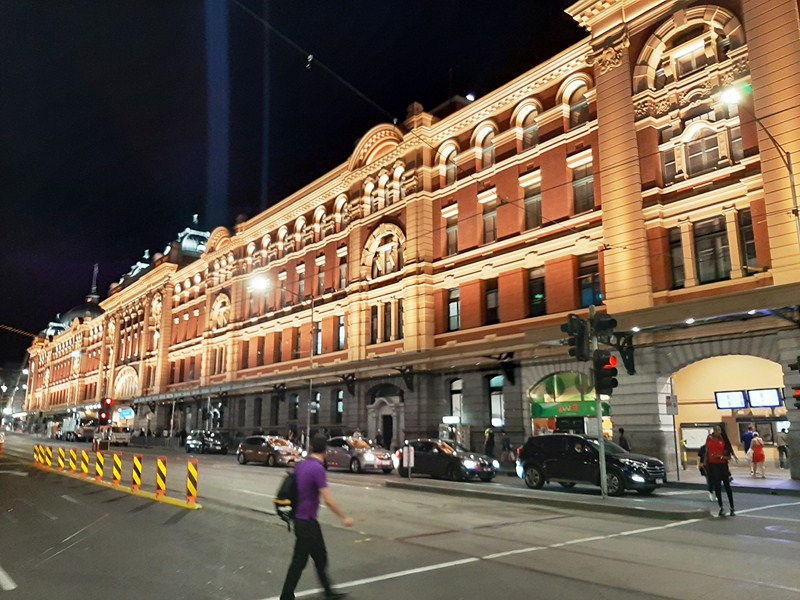
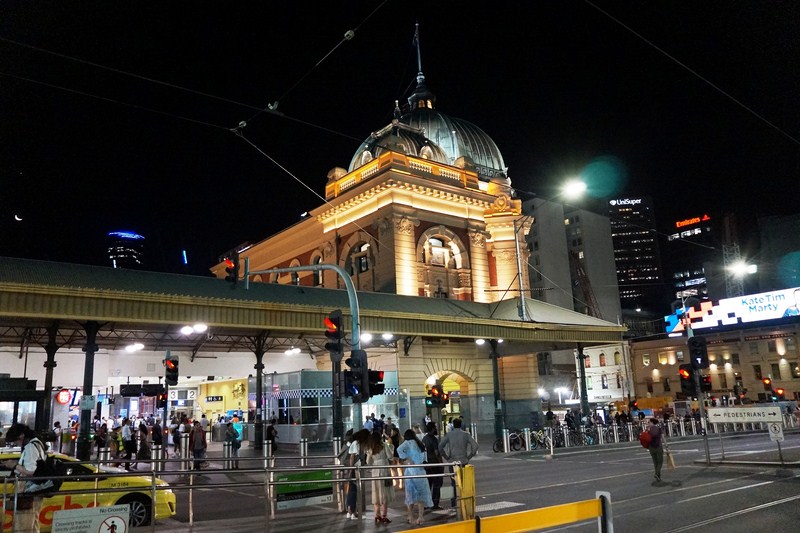

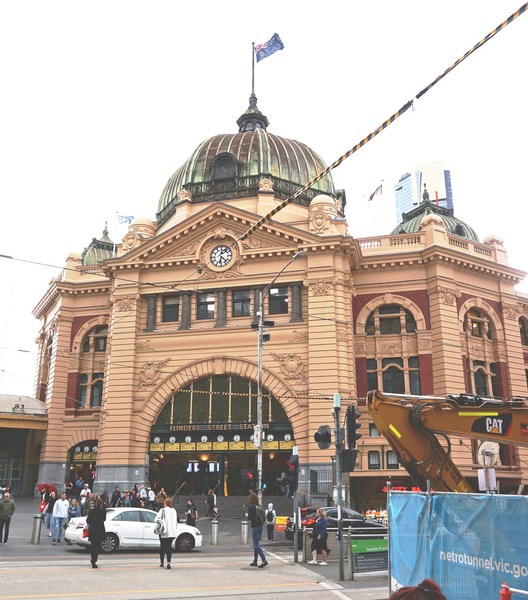

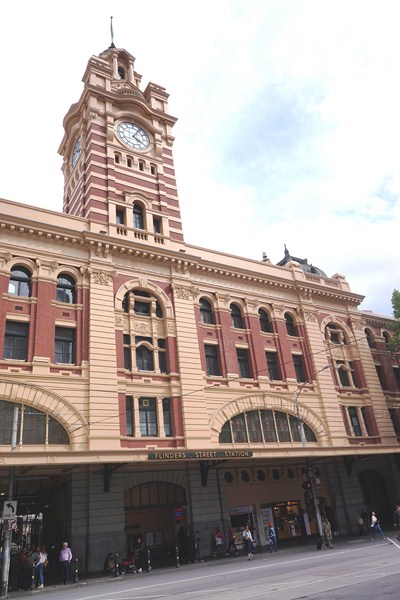
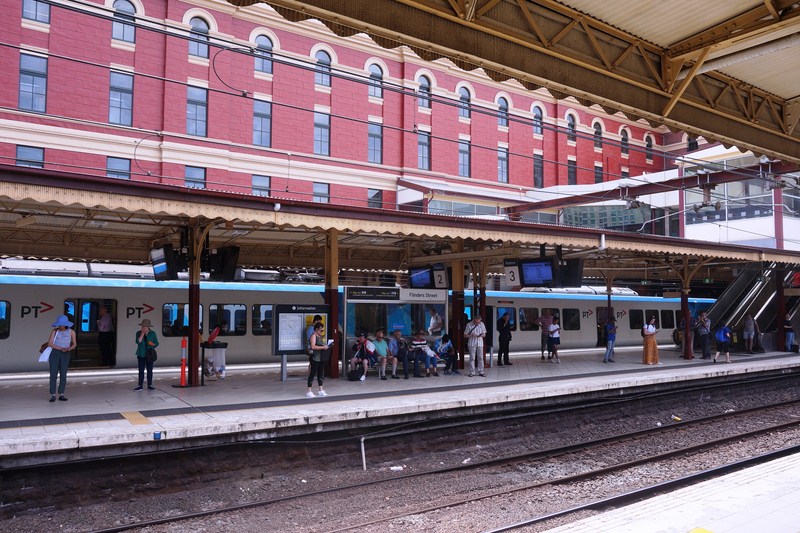
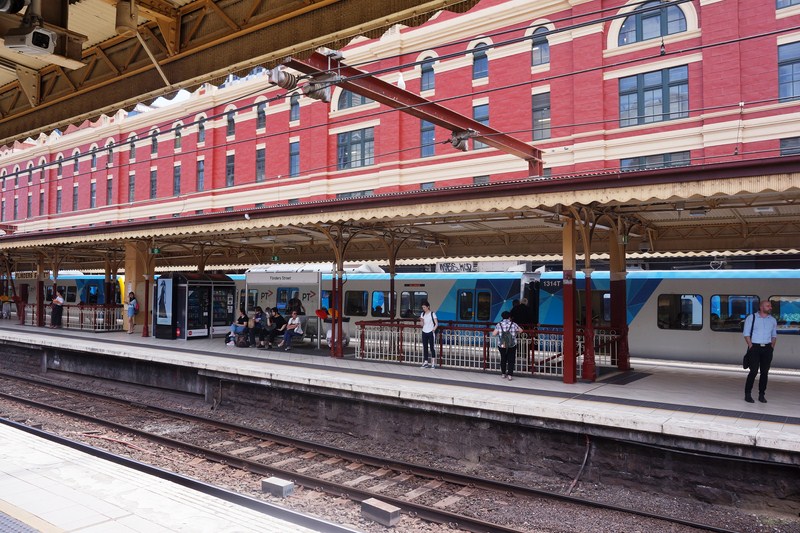
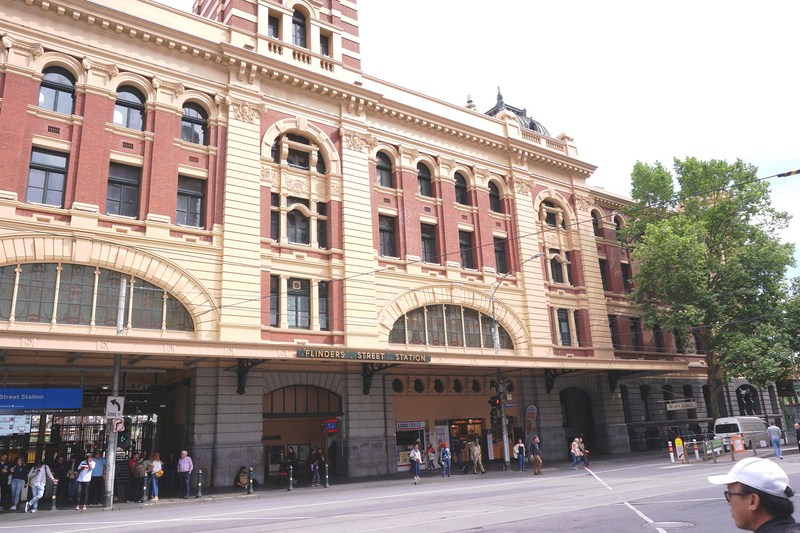

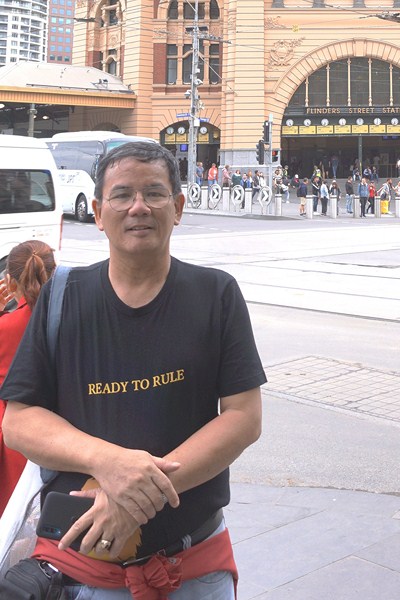
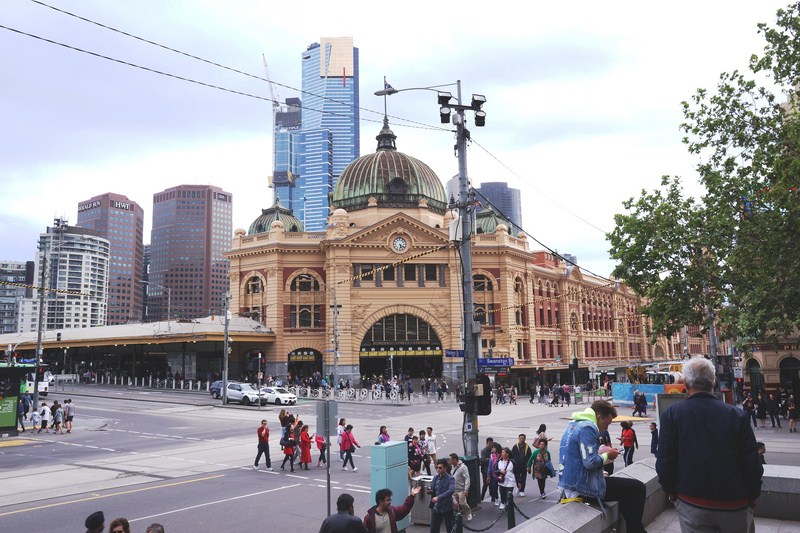
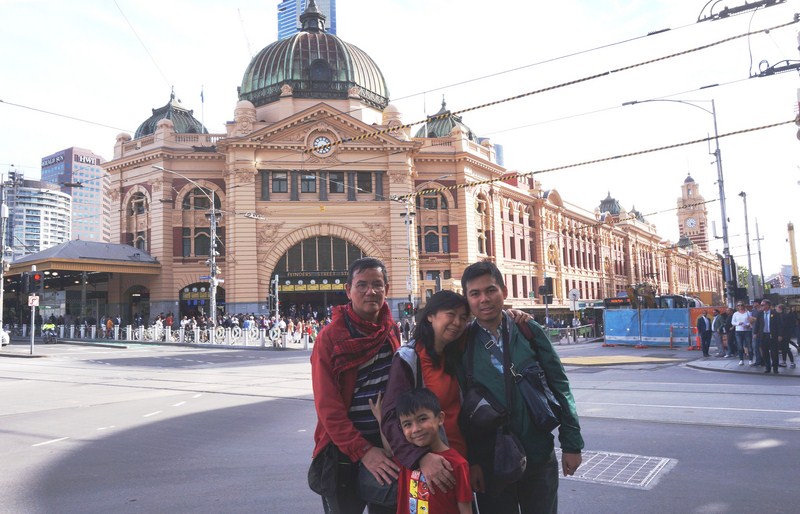
Pingback: St. Paul’s Cathedral (Melbourne, Australia) – B.L.A.S.T. – Live Life to the Fullest ……… Don't Stay Put